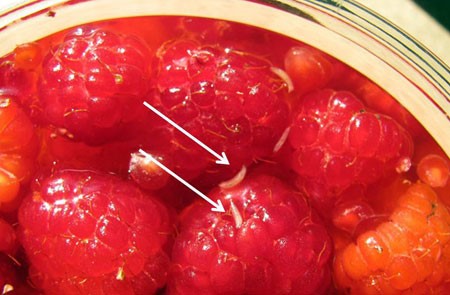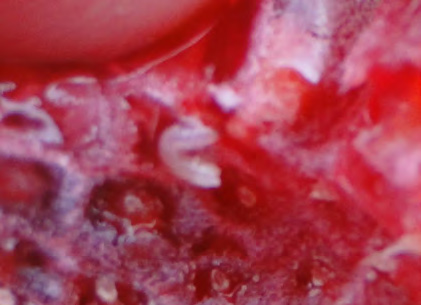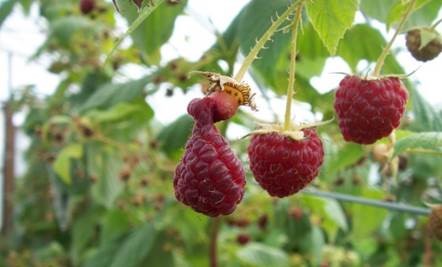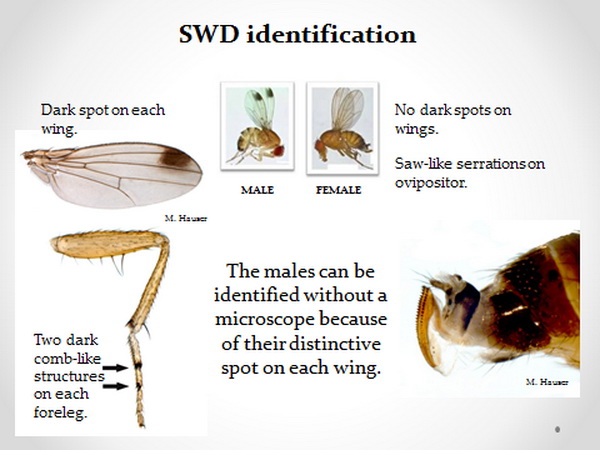The spotted wing drosophila is a vinegar or fruit fly of East Asian origin. Unlike other fruit and vinegar flies, which lay their eggs on past ripe or rotting fruit, they lay their eggs inside fresh fruit, often before harvest. Aside from the superficial scars left by the female’s ovipositor (their egg-laying device), most damage is done by the larvae feeding inside the fruit.
After only a few days, the fruit skin becomes dimpled or wrinkled, forming craters in the fruit, and making it susceptible to decays and rots. It is possible, however, for early-stage larvae or eggs to leave no visible impact on the fruit.


raspberry. Photo: Hannah Burrack, NC State Univ.

North Carolina State University

More information:
- Spotted Wing Drosophila – New York State IPM Program
- Spotted Wing Drosophila Identification Guide – Michigan State University
- Recognize Fruit Damage from Spotted Wing Drosophila (SWD) – Oregon State University
- Cornell Spotted Wing Drosophila blog – Alerts and other resources



